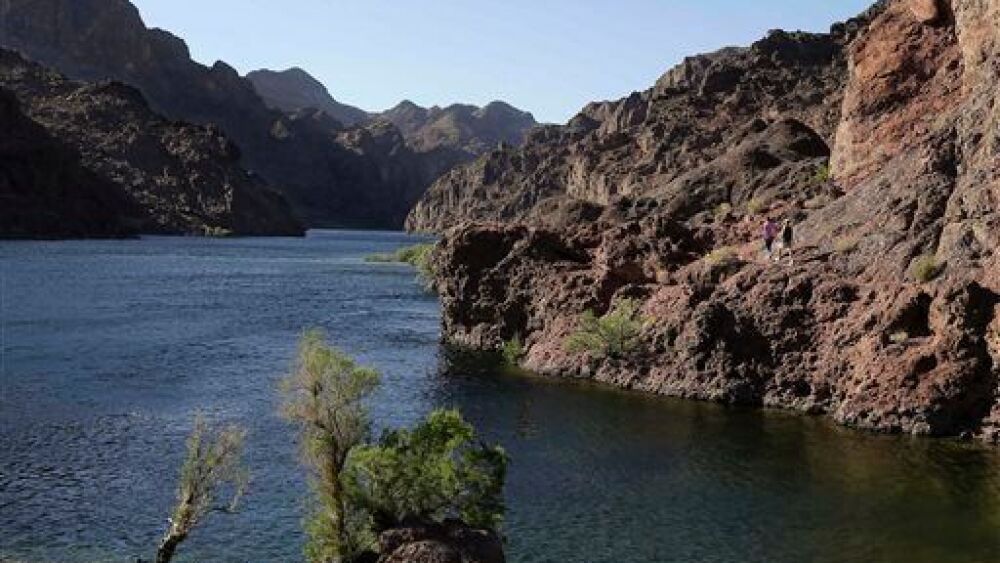DAN ELLIOTT
Associated Press
DENVER (AP) - The snow that falls on the Colorado mountains melts into trillions of gallons of water every year, and most of it flows downstream to Mexico, California and 17 other states. Colorado released its first-ever plan Thursday to cope with increasing competition for that water as the West grows drier.
The plan sets conservation goals, outlines ways to share water during droughts and suggests ways to preserve the environment, recreation and agriculture while accommodating rapid population growth.
It also has contentious elements, including a suggestion to increase water storage, which usually means building dams and reservoirs.
The plan doesn’t have teeth - it will be up to state and local governments, water utilities, irrigation districts and others to provide the money and muscle to make it work. But it won praise as a good step toward preparing for inevitable shortages in the future.
Key questions and answers about the plan:
___
WHY IS IT IMPORTANT?
Almost 4.6 trillion gallons of water rushes out of Colorado’s mountains each year as the winter snow melts. Two-thirds of it belongs to downstream users under a collection of international treaties, interstate agreements and court rulings. Colorado gets the rest.
“Strategic planning for Colorado is strategic planning for the West,” said James Eklund, director of the Colorado Water Conservation Board, which wrote the water plan.
Four significant rivers originate in the state: the Colorado, the Rio Grande, the Platte and the Arkansas. The Colorado River alone supplies water to about 40 million people and 6,300 square miles of farmland in seven states.
___
WHY IS IT NEEDED?
With its growing population, Colorado faces a shortfall of about 182 billion gallons a year by 2050, according to state projections. It also needs water for agriculture, the environment and things like skiing, fishing and rafting that make the state so attractive to visitors and new businesses.
Downstream states also are growing, so Colorado will have no choice but to send them their share.
While the West’s population grows, persistent droughts and climate change are expected to limit or shrink the supply.
“Obviously, if it wasn’t clear before, it’s becoming more clear with every passing year, we’ve got a very limited resource in the West,” said David Nickum, executive director of Colorado Trout Unlimited.
___
WHAT WILL THE PLAN DO?
The plan will set specific goals for conservation, although the effect on individual households hasn’t been calculated.
It will also propose a way to let farmers and ranchers sell their water to municipal utilities for a specific length of time but allow them to resume using that water themselves in the future. That would avoid a practice called “buy and dry,” where utilities buy farms and ranches to get their water, permanently taking the land out of agricultural production.
It lays out guidelines for projects that would move more water from the western half of Colorado to the east - regions often at odds over water - but Gov. John Hickenlooper said such projects would be a last resort.
The plan encourages local governments to combine their water planning and land use planning to reduce outdoor uses such as lawn watering and encourage water recycling.
It also encourages management plans for rivers and streams to keep their ecosystems healthy.
___
WHAT’S NEXT?
State government doesn’t have the power to force the plan on anyone. Instead, it will depend on the cooperation of local governments, water utilities, businesses, conservationists, and farmers and ranchers.
The Legislature also would have to pass laws and appropriate money, and the executive branch would have to steer some of the initiatives.
“This isn’t the end, this is the beginning,” Hickenlooper said after the plan was released. “Time is of the essence. ... We have to get right to work.”
___
Online: http://coloradowaterplan.com .
___
Follow Dan Elliott at http://twitter.com/DanElliottAP . His work can be found at http://bigstory.ap.org/content/dan-elliott .
Copyright 2015 The Associated Press.












